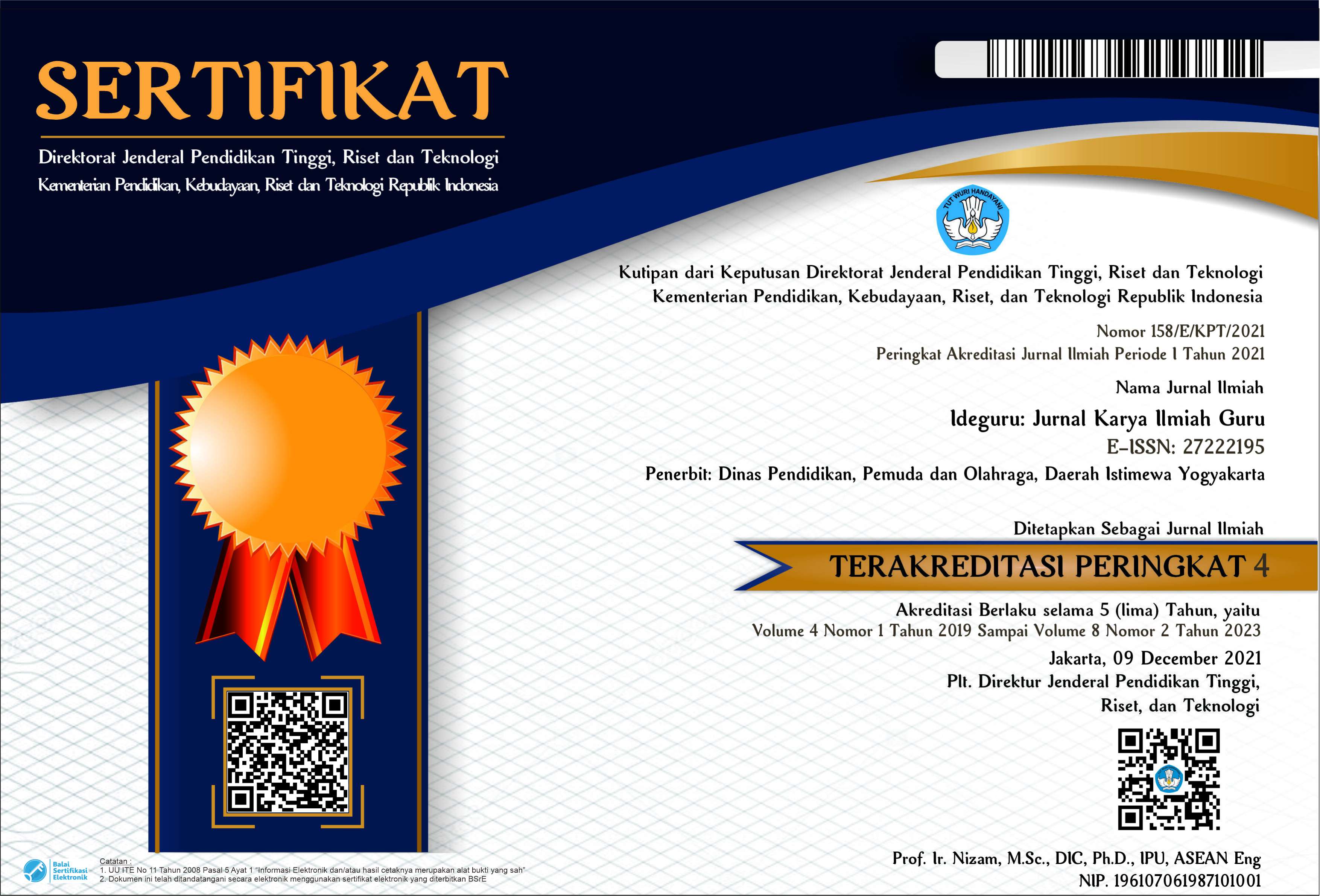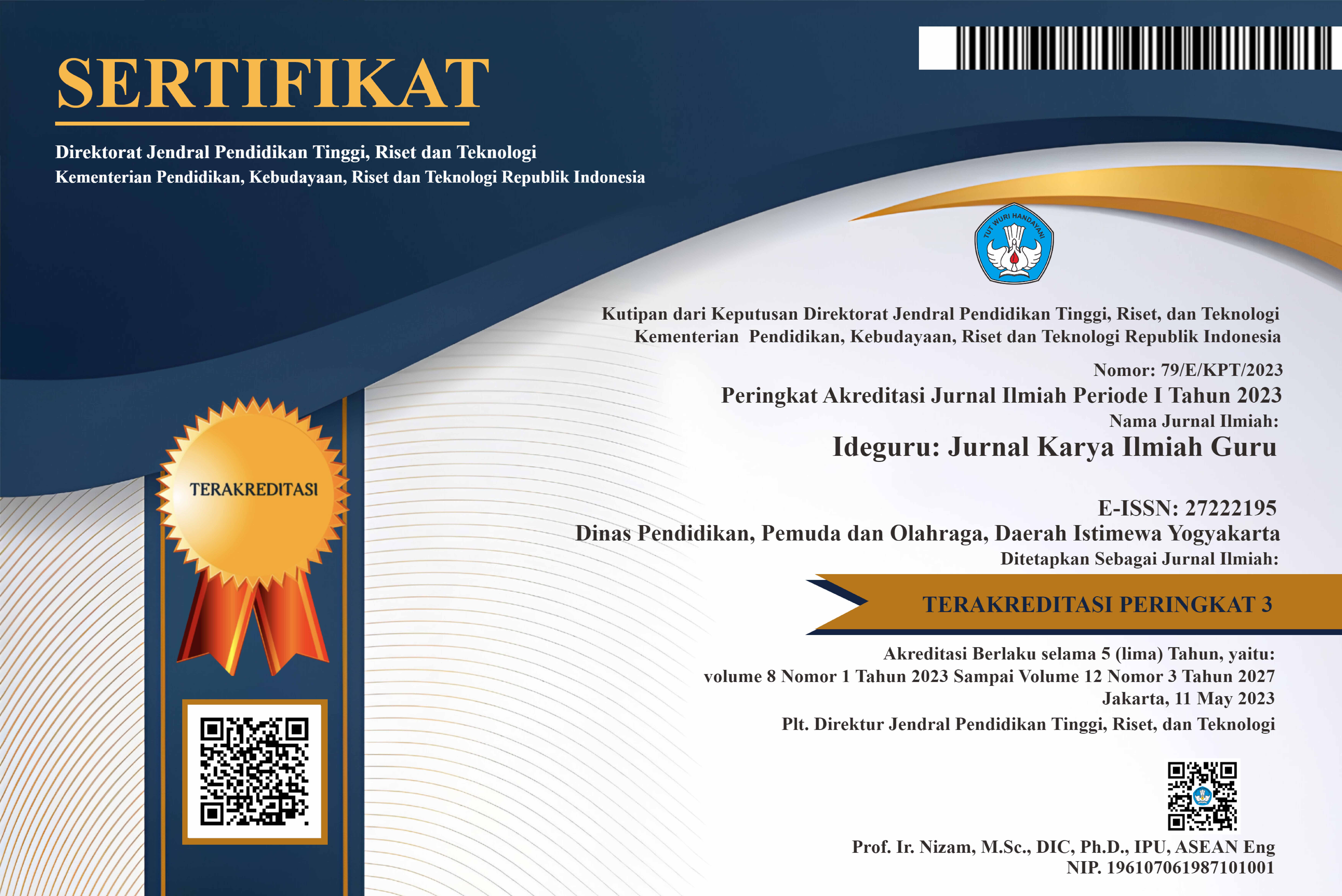Tes Instrumen Keterampilan Berpikir Tingkat Tinggi dan Keterampilan Literasi Digital
Abstrak
Pengembangan instrumen Evaluasi dalam proses pembelajaran siswa secara interaktif, menyenangkan, menantang, memotivasi, dan mengembangkan kreativitas dan kemandirian siswa diperlukan untuk meningkatkan High Order Thinking Skills (HOTS) dan digital literacy siswa (DLS). HOTS dan literasi digital adalah bagian dari keterampilan abad ke-21 yang penting bagi setiap individu. Penelitian ini mengembangkan instrumen tes yang terintegrasi dengan Augmented Reality (AR) dan Google Scholar (GS) untuk mendorong HOTS dan keterampilan literasi digital siswa. Jenis penelitian ini adalah penelitian pengembangan. Pokok bahasannya adalah skala dan perbandingan. Uji coba produk diterapkan pada siswa kelas 11 di Sleman, Indonesia. Validitas produk didasarkan pada penilaian ahli, validitas item, daya pembeda, tingkat kesulitan dan reliabilitas mencapai kategori baik secara umum. AR dibuat menggunakan aplikasi ARLOOPA yang dioperasikan dengan android. Instrumen penelitian dirancang untuk meningkatkan HOTS dan DLS.
Data Unduhan PDF
Copyright (c) 2022 Dzulfiqar Satria Waliyuddin, Dwi Sulisworo

This work is licensed under a Creative Commons Attribution 4.0 International License.

 DOI:
DOI:














